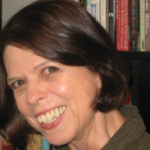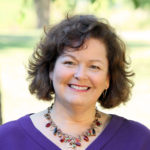PUBLISHED SEPTEMBER/OCTOBER 2020
by
Deb Vanasse, Reporter,
IBPA Independent magazine --

Deb Vanasse
The book distribution model for independent publishers is again changing for those seeking flexibility and discoverability.
Article Synopsis:
- Successful hybrid publishing involves emulating traditional publishers in every respect while also keeping authors front and center.
- Incorporating distribution into an existing publishing model is a major business decision.
- For publishers not ready to take on distribution in-house, try to negotiate terms with your existing distributors.
Once upon a time, publishers sold their books by signing exclusively with a distributor whose sales staff promoted their list to retailers who then offered the books for sale in their stores. Then came the digital revolution, bringing direct distribution through online platforms, making sales and promotion—the discoverability factor achieved by the sales force in the traditional model—the sole responsibility of publishers.
Yet the full-service distribution model for print has persisted, albeit with fewer distributors than in decades past. At the same time, the model is evolving to the benefit of independent publishers seeking flexibility as well as help with discoverability.
Falling Short

Leslie Turner
Publisher Leslie Turner of
Encourage Publishing recently found herself at a crossroads. Her small press fell short of the annual sales and catalog depth that traditional distributors require of their publishers, and the company’s profit margins felt too slim to justify the large upfront stock orders most print distributors require.
Print-on-demand (POD) order fulfillment wasn’t a good fit, either. “The POD model is costly,” Turner says. “Print costs and deep wholesale discounts leave only a tiny profit for the author and literally pennies per copy sold for the publisher. We could artificially inflate book prices to accommodate the loss, but doing so would price us out of the market. I had to find a better distribution model, but I couldn’t get it without growth—and I could not grow without better distribution.”
She knew that alternatives to traditional distribution have been evolving in manufacturing, electronics, and the film industry. After researching companies on the cutting edge of distribution alternatives in publishing, she believes “hybrid distribution” is coming to the industry, and, in some cases, it’s already here. “The more independent publishers demand it, the quicker a more customizable distribution model will rise to the top, and the more likely we will see more flexibility from our existing distribution choices,” she says.
More flexibility means publishers would not necessarily have to sign away 100% of their distribution rights to one company, she says. Instead, they can “craft a win-win distribution split that gives each partner the portion they can handle best and perhaps allows the publisher to retain a portion, such as direct sales, bulk sales, or a specific niche market not served by traditional distribution.”
Publisher-Distributor

Karen Pavlicin
For years, big publishers such as Random House have embedded a distribution option into their operations, distributing their own titles and also distributing for other companies. As publisher Karen Pavlicin of
Elva Resa Publishing discovered, in-house distribution that includes distribution for other companies is also a good fit in her market niche.
“Our Military Family Books distribution program sells in both a wholesale and retail capacity, driven by our online store,
MilitaryFamilyBooks.com, and our government catalog program,” she says. “Essentially, we created a marketplace to match military family books from a variety of publishers with the organizations that need quality resources for their military family support programs.”
To set up the company’s distribution arm, Pavlicin created a business model that draws from practices used by wholesalers with
General Services Administration (GSA) contracts as well as mail-order and specialty wholesalers. When selecting publishing partners, she looks for lists that extend the Elva Resa portfolio, including titles requested by customers in government bids.
In addition to meeting quality standards for applicable titles, potential partners must be positioned to supply books at wholesale discounts of 50-60% to accommodate government pricing requirements.
Terms are designed to minimize risks for all partners. Publishers must be able to print and ship cases within two weeks; they also pay shipping costs and drop-ship directly to customers as needed. In addition, participating publishers direct their military customers to purchase through the program. For their part, Military Family Books prepays inventory, eliminates returns, promotes the catalog, and sells into a variety of venues.
“We have been refining this distribution model for about 15 years,” Pavlicin says. “Ultimately, we look to our customers and partner publishers to find the effective sweet spot to help all of us meet our mutual goal of getting the right resources to the military community.”
In the broader market,
Brown Books Publishing Group also offers distribution to select publishers. Launched in 1994, Brown is a forerunner in the hybrid publishing segment. To president and COO Tom Reale, successful hybrid publishing involves emulating traditional publishers in every respect while also keeping authors front and center. Finding “no easy way to get a distributor and bolt them on” to the hybrid publishing experience, the company built its own distribution program.
Ranked by
Publishers Weekly as one of the top five fastest-growing independent publishers, Brown moves a lot of books, selling out nearly half their titles during the first year of publication. Reale attributes that sales volume in part to the hybrid royalty model that encourages authors to do their part in promotion, helping the sales team move books from the warehouse to retailers.

Recognizing the discoverability gap for companies that are growing their lists but don’t yet meet the criteria of the largest distributors, Brown is adding a full-service print distribution option for other publishers. As long as the books are well-crafted, the size of the list doesn’t much matter, Reale says, provided the sales team can get behind them. And Brown also allows their distribution partners to reserve certain outside-of-trade accounts where they have proven success.
Generally, Reale finds that publishers who recognize the need for full-service distribution are already growing and scaling their business at a fair clip. He points out that publishers who want full-service distribution should be able to print a minimum of 3,000 units per run. In addition, they should be prepared for a shift in cash flow, with payoffs from traditional distribution coming in four to six months instead of the 60-day payoff for POD sales.
Why don’t more publishers incorporate full-service distribution models into their business? Because it’s difficult, Reale says. Distributors need systems for managing inventory, inspecting quality, negotiating freight rates, managing returns, and delivering at rates that don’t break the bank. They also need to manage sales force expectations: Give reps a bad list, and they’ll leave.
It took five years for Reale to build Brown’s distribution network, and that was drawing from his own extensive background in the industry. And distribution is about more than getting books into bookstores, he says. An effective sales force needs to get meetings with big buyers who trust their judgment. Worldwide reach and book-to-film are also important. “The value is in fully exploiting the asset,” Reale says.
As Pavlicin points out, incorporating distribution into an existing publishing model is a major business decision. “Don’t make the mistake of thinking that adding a distribution program is just adding a few more books to your e-commerce store,” she says. “A program like this is a significant investment of time and resources and requires focused management to do it well.”
She recommends starting with a cost-benefit analysis that includes the added value distribution would bring to customers and other publishers as well as the value to the company itself. “Look for synergies with your mission, subject matter, customer programs, and packaging,” she says. “Internally, walk through the whole process and determine your real investment to set up and run this program.”
Distribution is a low-margin business, but Pavlicin says that synergies can develop. “If adding distribution furthers your company’s mission, meets unique customer needs, and builds mutually beneficial long-term partnerships, then it can open many possibilities to extend your business portfolio,” she says.
Flexible Terms
For publishers not ready to take on distribution in-house, Turner suggests trying to negotiate terms with existing distributors. As a first step, she suggests taking “an honest look” at your company’s strengths and weaknesses as well as how others in the industry perceive your efforts. “Know your numbers and what your margins are so you can more effectively negotiate,” she says. “If a distributor doesn’t call you back reasonably quickly, move on.”
Like Brown, book distributor
APG Sales also allows publishers to sell directly into certain accounts, a policy borne from APG president Marty Flanagan’s 25 years of experience as a publisher. “If I felt that I had an excellent relationship with a retail buyer, it really irked me that the distributor was going to force me to allow them to sell this account, because I thought I could do a better job,” he says.
When publishers are negotiating terms with APG, Flanagan invites them to submit a list of accounts they feel they should sell, and the parties discuss whether the publisher or the distributor is most likely to generate more sales. Even specialty APG accounts, such as Cracker Barrel and Penworthy, can be reserved if the publisher has a proven track record with them. “However, there are certain accounts that we must have to make the numbers work,” says Flanagan, citing as examples Ingram, Barnes & Noble, and Amazon.
However, APG has periodically allowed some larger publishers to sell directly to Amazon during the first year of their distribution agreement. “It is always offered with a deadline, so APG and the publisher can assess at the deadline date whether APG is meeting the sales expectations of the publisher on all the other business,” Flanagan says. “If APG is doing a good job, then both parties can agree to give APG their Amazon business.”
On the Horizon
In the same ways that hybrid publishing precipitated changes in the traditional model for publishing, Reale expects that deviations from the standard distribution model are going to force changes in the traditional print distribution model.
Turner concurs, predicting that within the next several years, some independent distributors will begin marketing themselves as “hybrid” distributors. “I expect we will see more and more blended companies that successfully serve multiple stakeholders in the industry,” she says. These might include booksellers who distribute or provide shared services with other bookstores, publishers who distribute and provide marketing or agency services, and distributors who also print and publish.
As these changes take hold, Turner suspects that a
standards checklist like the one IBPA curates for hybrid publishers will emerge. For independent publishers yearning for out-of-the-box distribution options, these changes can’t come too soon.
Deb Vanasse is the author of 17 books. Among her most recent are the novel Cold Spell
and a biography, Wealth Woman: Kate Carmack and the Klondike Race for Gold
. She also works as a freelance editor.